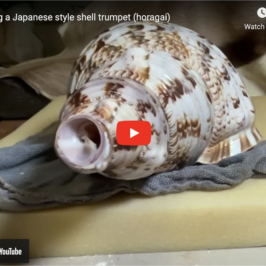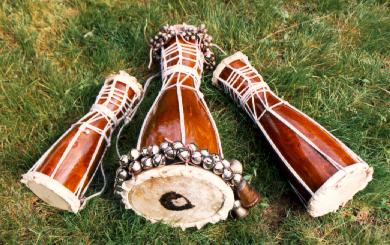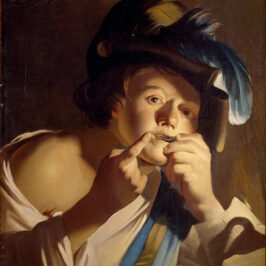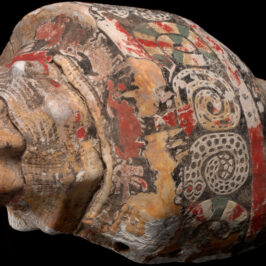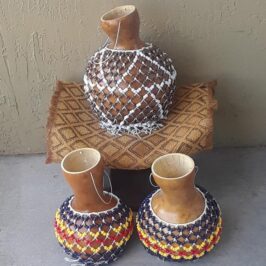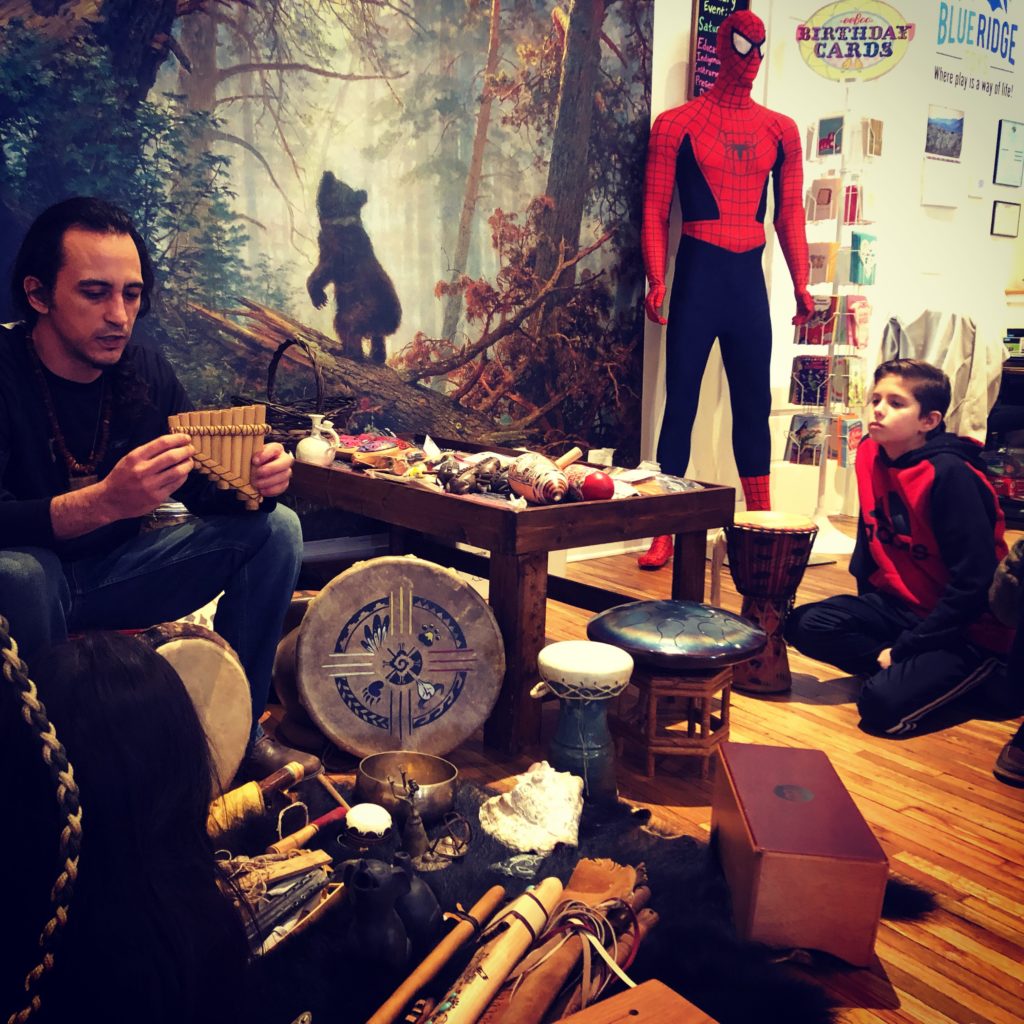
A common question I have been asked by people contacting us is… “What type of drum do I have?”
One of my first answers is usually… “No, your drum is probably not a bongo or conga, though those are some commonly found drums today.”
This commonly found problem has a simple solution that could have many various answers. In this article we will explain some of the more common drums, along with a few not so common ones you may find.
There are many types of drums, though usually you will find indigenous and contemporary styled drums. When we refer to indigenous drums, we are usually referring to drums which usually have no metal components and which look relatively rustic or primitive (sometimes using rawhide or rope for lashing the head to the drum body). Most contemporary drums use metal components to hold the drum head (skin) onto the drum. Then there are many drums that may not have a drum head or skin at all, and may have tongues or dimples, depending on the type of materials used, and the style of drum.
Common Drums
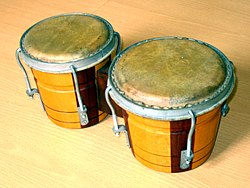
Bongo: Afro-Cuban percussion instrument consisting of a pair of small open bottomed drums of different sizes.
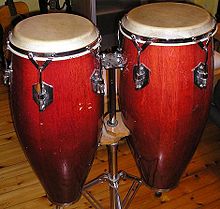
Conga: a tall, narrow, single-headed drum from Cuba. Congas are staved like barrels.

Tambourine: a musical instrument in the percussion family consisting of a frame, often of wood or plastic, with pairs of small metal jingles, called “zills“.
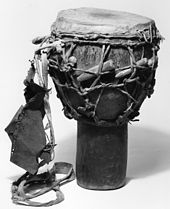
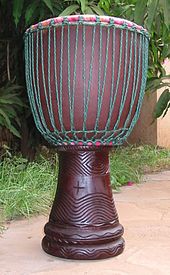
Djembe: a rope-tuned skin-covered goblet drum played with bare hands, originally from West Africa.
According to the Bambara people in Mali, the name of the djembe comes from the saying “Anke djé, anke bé” which translates to “everyone gather together in peace” and defines the drum’s purpose.

Dundun: A dunun is a rope-tuned cylindrical drum with a rawhide skin at both ends, most commonly cow or goat. The drum is played with a stick. Depending on the region, a plain straight stick, curved stick with flat head (similar to the stick used for a tama), or a straight stick with a cylindrical head attached at right angles near one end may be used to strike the skin.
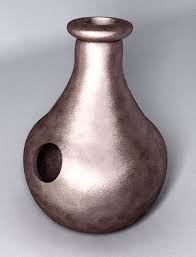
Udu: The udu is a plosive aerophone (in this case implosive) and an idiophone of the Igbo of Nigeria. In the Igbo language, ùdù means ‘vessel’. Actually being a water jug with an additional hole, it was played by Igbo women for ceremonial uses. Usually the udu is made of clay.
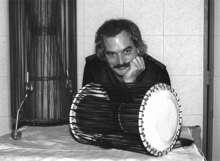
Talking Drum: an hourglass-shaped drum from West Africa, whose pitch can be regulated to mimic the tone and prosody of human speech. It has two drumheads connected by leather tension cords, which allow the player to modulate the pitch of the drum by squeezing the cords between their arm and body.
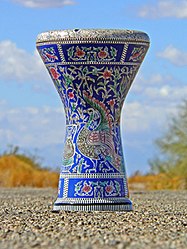
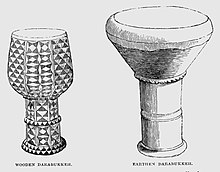
Doumbek or Goblet Drum: The goblet drum (also chalice drum, tarabuka, tarabaki, darbuka, derbake, debuka, doumbek, dumbec, dumbeg, dumbelek, tabla, tablah, tableh, toumperleki or zerbaghali, Egyptian Arabic: دربوكة / ALA-LC: darbūkah) is a single head membranophone with a goblet shaped body used mostly in Egypt, also in parts of the Middle East, North Africa, South Asia, and Eastern Europe.
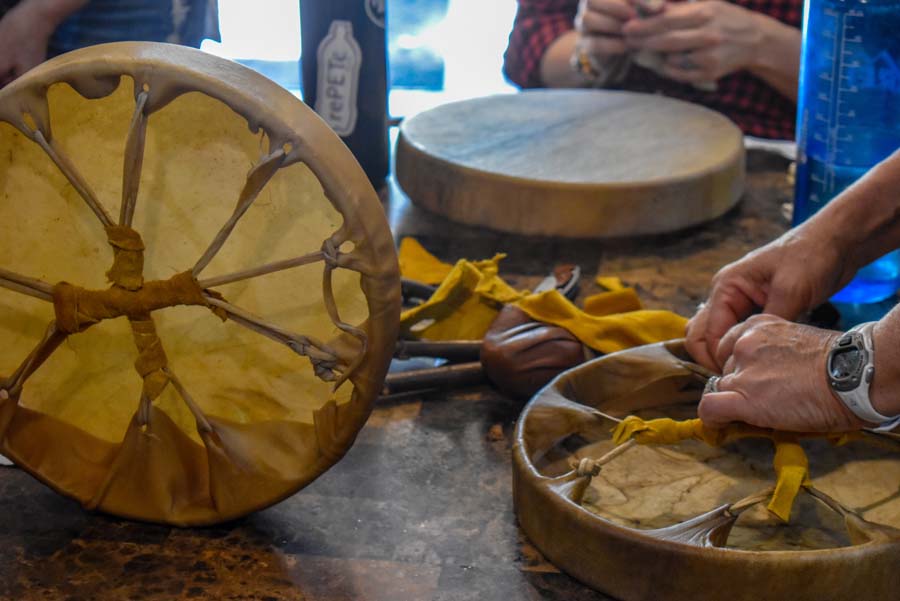
Native American Frame Drum: A frame drum is a drum that has a drumhead width greater than its depth. Usually the single drumhead is made of rawhide or man-made materials. Shells are traditionally constructed of bent wood (rosewood, oak, ash etc.) scarf jointed together; plywood and man-made materials are also used. Some frame drums have mechanical tuning and on many the drumhead is stretched and tacked in place. It is the earliest skin drum known to have existed. Examples are found in many places and cultures. The frame drum is one of the most ancient musical instruments; it is reputed to be the first drum to be invented.
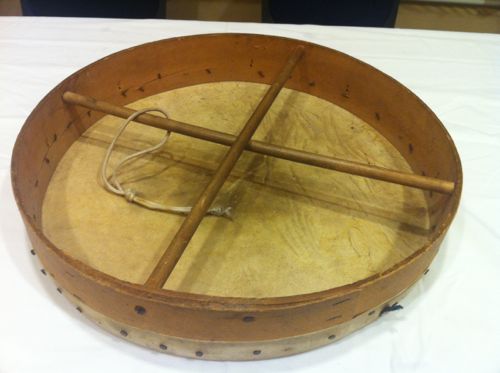
Bodhran: an Irish frame drum ranging from 25 to 65 cm (10–26 in) in diameter, with most drums measuring 35–45 cm (14–18 in). The sides of the drum are 9–20 cm (3 1⁄2–8 in) deep. A goatskin head is tacked to one side (synthetic heads or other animal skins are sometimes used). The other side is open-ended for one hand to be placed against the inside of the drum head to control the pitch and timbre.

Taiko: a broad range of Japanesepercussion instruments. In Japanese, the term refers to any kind of drum, but outside Japan, it is used to refer to any of the various Japanese drums called wadaiko (和太鼓 “Japanese drums”) and to the form of ensemble taiko drumming more specifically called kumi-daiko (組太鼓 “set of drums”).
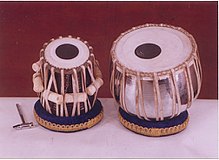
Tabla: a membranophone percussion instrument originating from the Indian subcontinent, consisting of a pair of drums, used in traditional, classical, popular and folk music.[1] It has been a particularly important instrument in Hindustani classical music since the 18th century, and remains in use in India, Pakistan, Afghanistan, Nepal, Bangladesh, and Sri Lanka.[2] The name tabla likely comes from tabl, the Persian and Arabic word for drum.

Batas: a double-headed drum shaped like an hourglass with one end larger than the other. The percussion instrument is used primarily for the use of religious or semi-religious purposes for the native culture from the land of Yoruba, located in Nigeria, as well as by worshippers of Santería in Cuba, Puerto Rico, and in the United States. The Batá drum’s popular functions are entertainment and to convey messages. Its early function was as a drum of different gods, drum of royalty, drum of ancestors and drum of politicians.
Conclusion
As you can see, there are many different types of drums that can be found from around the world. The above list is just a portion of the common drums you may find. Being able to define the drum you have in your possession helps you connect with the culture of that specific drum and how it should be played. There are many different types of drum rhythms associated with each type of drum. Now it’s time to learn more about your drum!
If you have any drum repair questions, or would like to attend one of our workshops, feel free to reach out to us! Thanks visiting and we hope you found our site educational, check out our other articles for more indigenous instrument knowledge!

